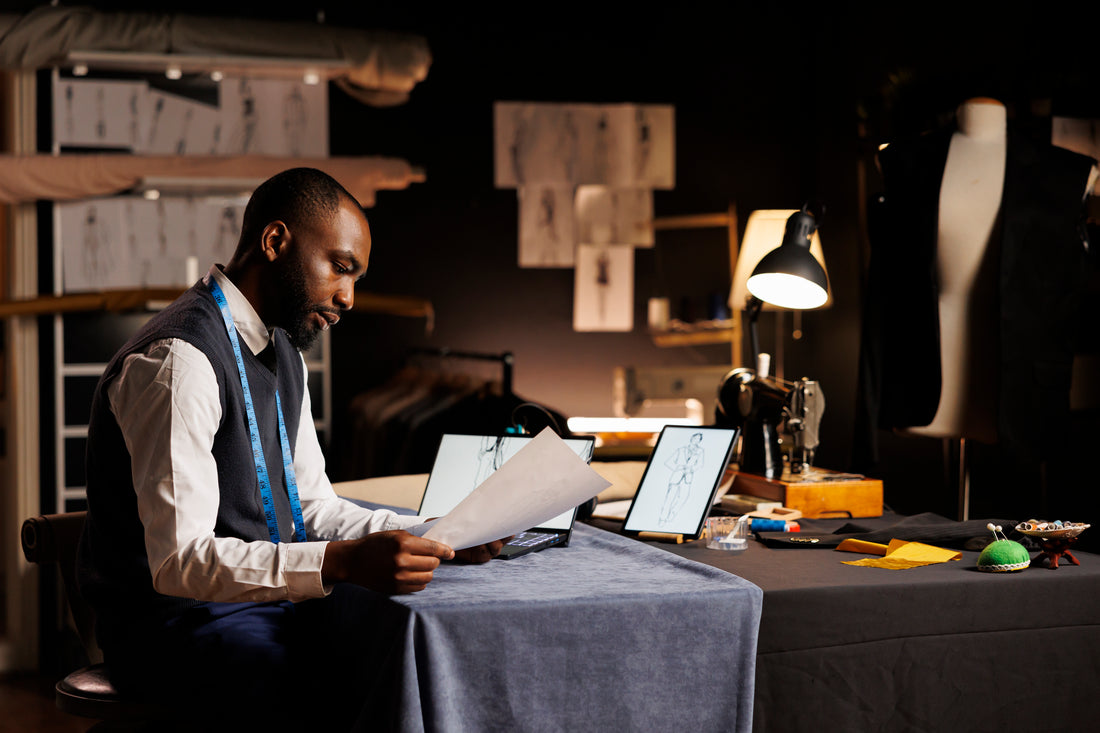
Defining Fashion: An Exploration of Style, Culture, and Self-Expression
Share
Fashion is more than just clothing and accessories; it is a dynamic form of art, a cultural phenomenon, and a powerful means of self-expression. As a fashion designer, I view fashion as an intricate tapestry woven from various threads of history, culture, individuality, and innovation. Here, we delve into what truly defines fashion and why it holds such a significant place in our lives.
**1. Fashion as an Art Form**
At its core, fashion is an art form that combines creativity and craftsmanship. Designers are akin to artists, using fabric as their canvas and thread as their paint. The process of designing a garment involves a keen eye for detail, an understanding of color theory, and a mastery of various techniques and materials. Just like a piece of art, fashion can evoke emotions, tell stories, and challenge perceptions.
**2. Fashion as Culture**
Fashion is deeply intertwined with culture. It reflects the values, beliefs, and traditions of a society. Throughout history, different cultures have used clothing to convey social status, religious beliefs, and cultural identity. For example, the kimono in Japan, the sari in India, and the dashiki in West Africa are more than just garments; they are symbols of cultural heritage and identity.
In modern times, fashion continues to be a powerful cultural force. It absorbs influences from music, art, politics, and technology, creating a visual dialogue that mirrors the zeitgeist. Street fashion, for instance, often reflects social movements and youth culture, while high fashion showcases the avant-garde and pushes the boundaries of creativity.
**3. Fashion as Self-Expression**
One of the most compelling aspects of fashion is its ability to serve as a medium for self-expression. The choices we make in our clothing and accessories reveal a lot about our personalities, moods, and lifestyles. Fashion allows individuals to convey their identity, whether through bold, statement pieces that command attention or minimalist designs that reflect understated elegance.
Personal style is a powerful tool for communication. It can signal confidence, creativity, professionalism, or rebellion. By experimenting with different looks, people can explore and express different facets of their personality, creating a visual narrative of who they are.
**4. The Evolution of Fashion**
Fashion is ever-evolving, influenced by historical events, technological advancements, and changing social norms. The evolution of fashion can be seen in the transition from the elaborate gowns of the Victorian era to the flapper dresses of the 1920s, the rebellious leather jackets of the 1950s, and the minimalist designs of the 1990s.
Each era of fashion brings new silhouettes, fabrics, and aesthetics, reflecting the spirit of the times. Today's fashion is characterized by a blend of nostalgia and futurism, with designers drawing inspiration from past decades while incorporating cutting-edge technology and sustainable practices.
**5. The Business of Fashion**
Fashion is also a global industry that drives economic growth and creates millions of jobs worldwide. It encompasses various sectors, including design, manufacturing, retail, marketing, and media. Major fashion capitals like Paris, Milan, New York, and London host biannual fashion weeks that set the trends and showcase the work of top designers.
The business of fashion is increasingly influenced by digital innovation. E-commerce, social media, and influencer marketing have transformed how brands connect with consumers, making fashion more accessible and interactive.
**6. Sustainable Fashion**
In recent years, there has been a growing emphasis on sustainable fashion. As awareness of environmental issues increases, both designers and consumers are seeking ways to reduce the fashion industry's impact on the planet. Sustainable fashion involves using eco-friendly materials, ethical production practices, and promoting a circular economy where clothes are recycled and reused.
This shift towards sustainability represents a fundamental change in how we define fashion. It challenges the notion of fast fashion and encourages a more mindful and responsible approach to consumption.
**Conclusion**
Fashion is a multifaceted phenomenon that goes beyond mere aesthetics. It is an art form that celebrates creativity, a cultural marker that reflects societal values, and a means of self-expression that empowers individuals. Fashion evolves with time, influenced by historical, social, and technological changes, while also functioning as a significant economic driver. As we move towards a more sustainable future, fashion continues to redefine itself, blending tradition with innovation and fostering a deeper connection between the clothes we wear and the world we inhabit.
In essence, fashion is a reflection of our collective identity and an ever-changing dialogue between the past, present, and future. As a designer, I am honored to contribute to this vibrant and dynamic tapestry, creating pieces that inspire, challenge, and delight.
